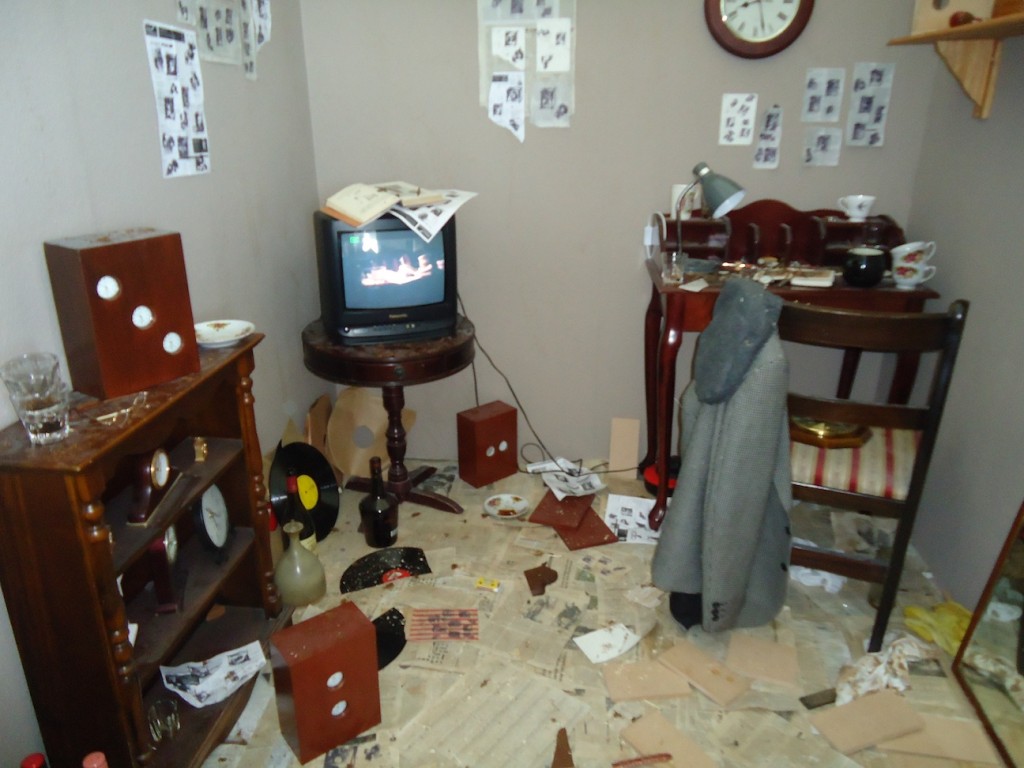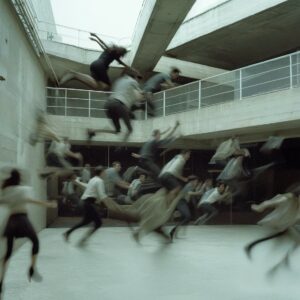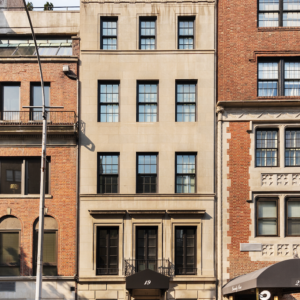On Friday, I attended the John Moores University Fine Art Degree show, a show I’ve attended annually over the past ten years. This year the show was entitled DEPARTURE and was held, as last year, at the Art and Design Academy in Duckinfield Street, a purpose built building housing the Art School. The show was billed as being curated by world class curator Lorenzo Fusi and is well documented.
Nostalgia led me to look back through my little archive of catalogues from exhibitions, I have previously attended (since 2002), which were held at the Liverpool School of Art and Design, 2A Myrtle street, a late 19th century building which had been a home for destitute children.
I always found the exhibitions there, in the curious labyrinthine corridors, a particular pleasure and what might be referred to as an immersive experience in itself. It was as though I entered an installation in order to enter further installations or experiences. It would be interesting to trawl through some of the names in past catalogues to find out how they’ve fared since graduation. The students graduating in 2002 were a pre website, blogging and tumblr group of course but there will be ways of tracking them down! In fact one previous graduate, from 2004-07, has produced interesting documentary work linked to the idea of archiving the past of the University in image (drawings and paintings) and text.
But back, or forward rather, to 2011. The introduction to the catalogue by Programme Leader John Byrne explained how the students had been encouraged ‘ … to challenge themselves by escaping the gravity of their existing practices’. And he commented that, ‘Their response has been phenomenal. Not only has every level three student this year worked ceaselessly to improve their work, they have built up a challenging vocabulary of skills that are enabling them to articulate new practices in different ways.’
I was particularly impressed by the narrative of many of the works. I felt as though I was being drawn into the lives of characters explored in the works and in some ways many of the pieces lay on a cusp between art, story and film. This was the case for Jennifer Carden’s work ‘Ominious Events’: Her explanation that her work was about ‘reality and how reality has become more and more blurred over time, due to technological advancement…’ was interesting but belied the sense of story in her installation of a room owned by an elderly clock maker, ‘who is not what he seems’.
Another piece, which drew me into a curiosity about the character was Aynsley Ward’s work, ‘Who are we to Judge,’ which is a film and photographic work about Tom aka Miss Brenda and is a study of society and transgender.
Hayley Davies work, Control, focused on the narrative of a character. in this case, as Davies states, Control is an autobiographical work, ‘ … I am recreating a past, memorialising it and weaving it into a narrative performance. A relationship between a mind and body not working together in sync but confined to a culture within society today. A contradiction between power and identity. A self portrait to confess an illness, influenced by lack of control. Obsession. Loss of self. Addiction. My art is documenting a process, using video, text, and photography … ‘ The work had a confessional tone, the video showing footage of a girl vomiting into a toilet bowl and a series of food diary entries covering three months of the main character’s life.
There was a limited amount of work focusing on paint as a medium.Two students exhibited still life: in the case of Laura Kelly, a series of flower studies, while Pernilla Hedenstrom used paint and produced a series of still life works which had a focus on environmental and sociological concerns. There were several students who used drawing within their final works but the vast majority of the forty two works moved away from paint and drawing toward the use of video, animation, photography, sculpture, installation or more immersive pieces. The comments made by students who had previously considered more ‘traditional approaches’, seemed almost apologetic in some cases. For example, ‘Taking influence from Mark Rothko, specifically ‘Black on Maroon’ and more recently the work of Luc Tymans and Gerhard Richter, I have become confident at favouring content to mere draftsmanship.’ (Martin Trainer).
Many of the themes and concepts students had chosen to work on were vast, such as the documentary work of Tom Wray, ‘Within my art practice I have explored what I feel are the three main events of a humans life – Birth, an emergence into this world, Marriage, the commitment to one other soul and Death, the inevitable stage of returning to the earth. … ‘. and might give them a basis for work and exploration for many years to come. It was heartening to see that with the encouragement of a thoughtful tutor who seemed concerned with the philosophical stature of their final works, the students had produced a show which hopefully provoked further thought for the viewer and for themselves.
Maria Isaacs






